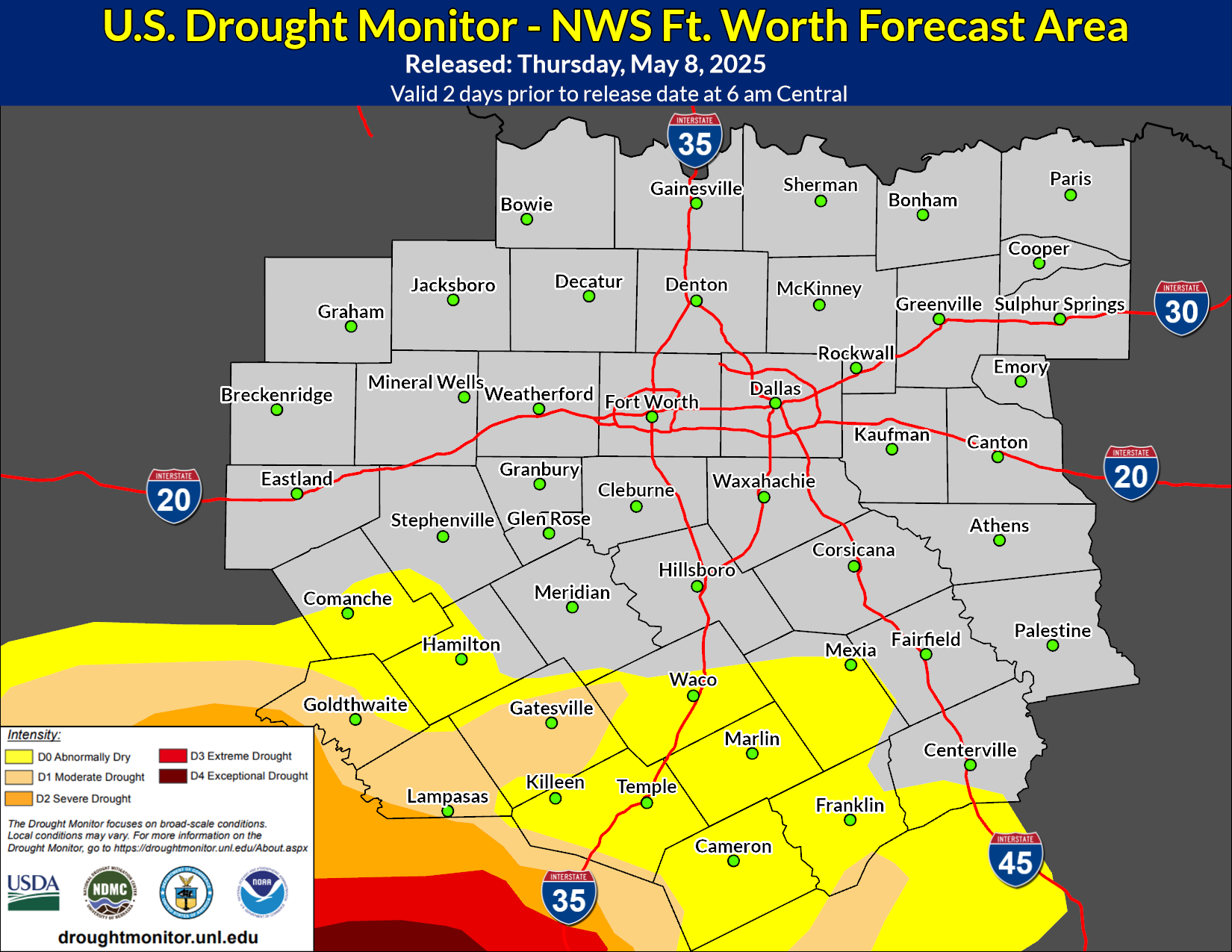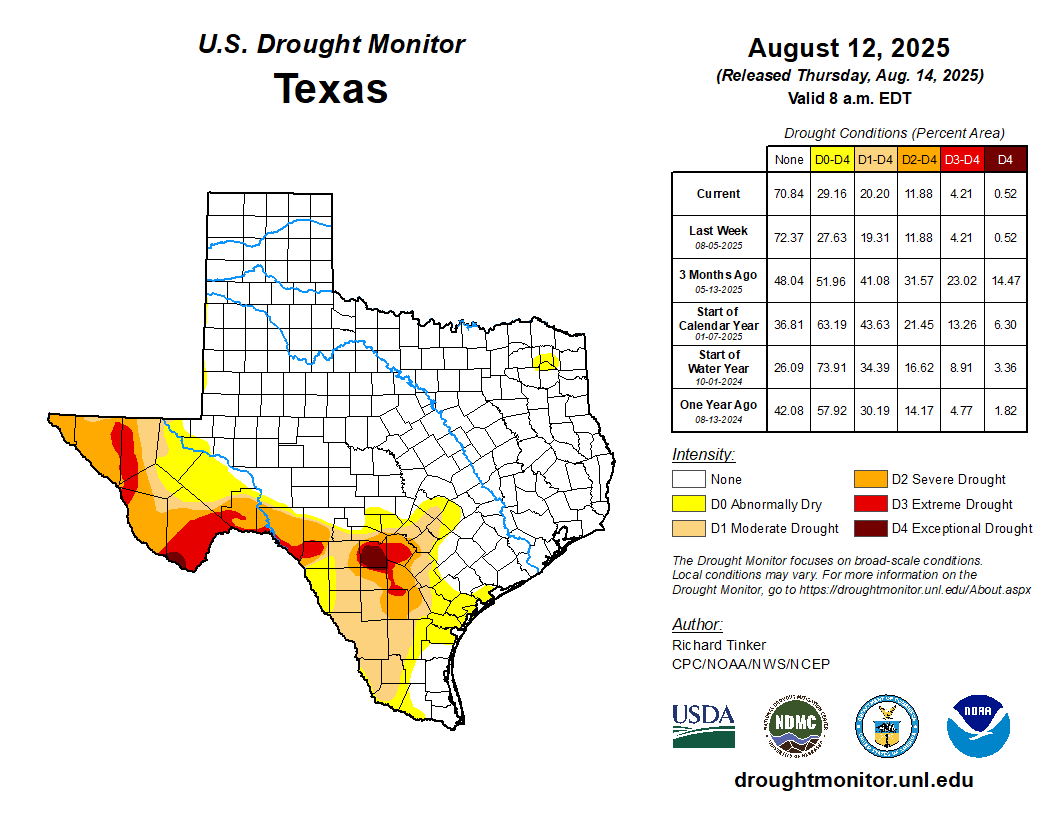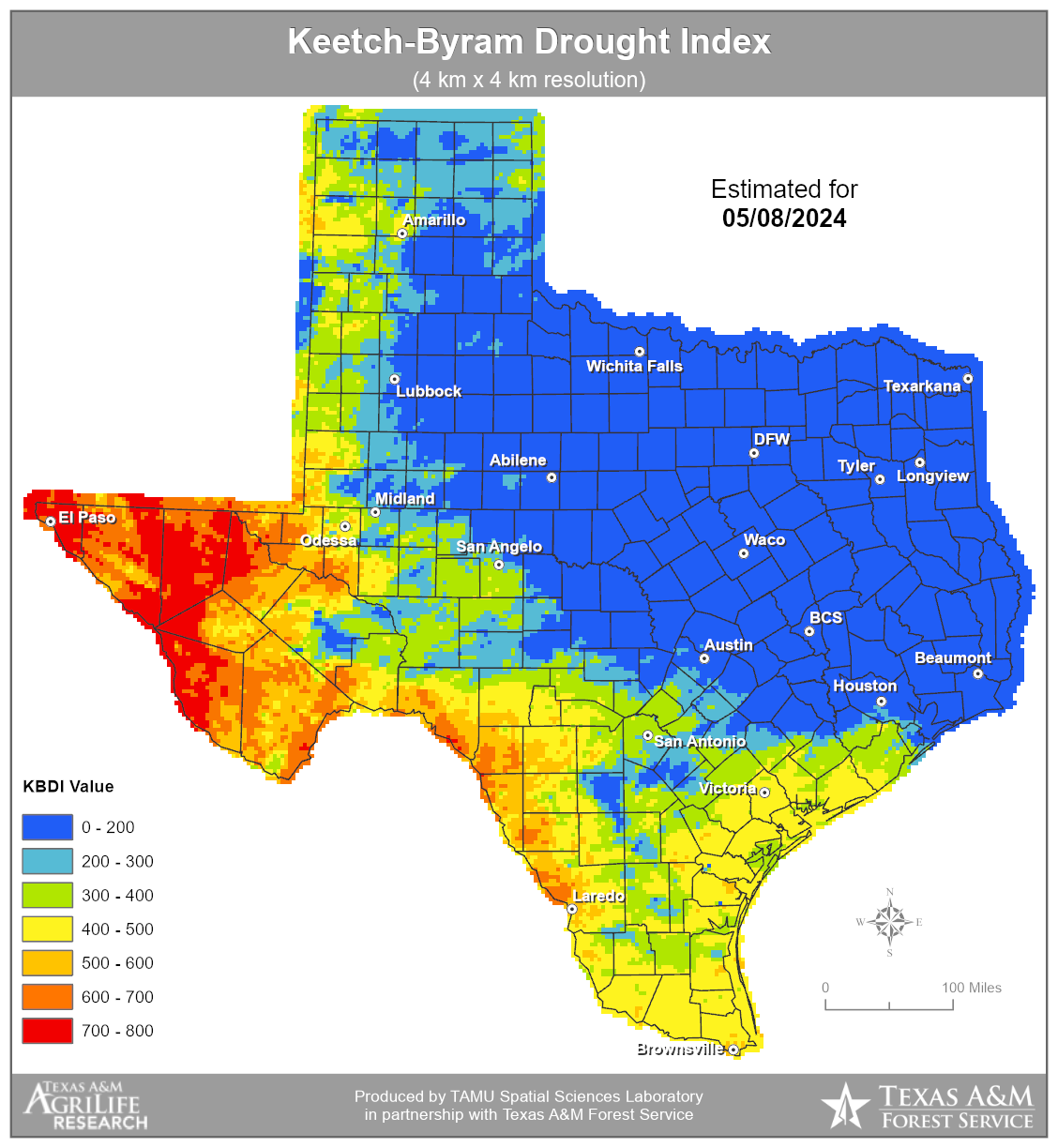
An atmospheric river will bring heavy rainfall to lower elevations of California this week, and heavy snow to the Sierra Nevada mountains. Flash flooding, some of which may be locally considerable, will be a concern on the western foothills of the Sierra Nevada mountains through Tuesday. Landslides, rockfalls and mudslides are possible in the Southern California mountains. Read More >
Fort Worth/Dallas, TX
Weather Forecast Office
Drought Information
The record-breaking rainfall on November 20th 2025 combined with additional rainfall during the latter half of the month, resulted in rapid improvements to the growing drought conditions across North and Central Texas. The percentage of our 46 county warning area covered in D0 (Abnormally Dry) to D4 (Exceptional Drought) conditions fell from 66.56% on November 18, 2025 to 16.34% as of December 2, 2025.
The current seasonal precipitation outlook valid for Dec '25 - Jan '26 indicates below normal precipitation. Despite this dry outlook, currently drought re-development is unlikely this winter.
Current Drought Conditions
Fire Danger
With winter dormancy ongoing, any extended period without precipitation could reignite wildfire concerns. The days with the greatest potential for fire initiation and spread are those that are sunny and warm with low humidity and breezy winds. This potential will diminish with the onset of the spring growing season.
Even if a formal burn ban is not in effect for your area, it is still important to be vigilant about fire usage. Avoid open flames near dry vegetation, and assure all coals and embers are fully extinguished.
The Keetch-Byram Drought Index is a drought statistic specifically designed to assess fire danger.
Drought Links
![]() National Integrated Drought Information System
National Integrated Drought Information System
![]() National Drought Mitigation Center
National Drought Mitigation Center
Current Hazards
National Outlooks
Tropical
Local Storm Reports
Storm Reports (Graphical)
Submit Storm Report
Tornado Warnings
Severe Thunderstorm Warnings
Flash Flood Warnings
Forecasts
Forecast Discussion
Graphical Forecast
Aviation Forecasts
Fire Weather
Hazard Planner
N. Texas Convective Parameters
US Dept of Commerce
National Oceanic and Atmospheric Administration
National Weather Service
Fort Worth/Dallas, TX
3401 Northern Cross Blvd.
Fort Worth, TX 76137
817.429.2631
Comments? Questions? Please Contact Us.





